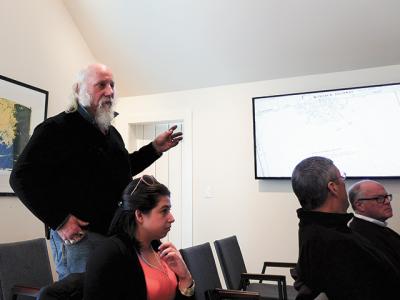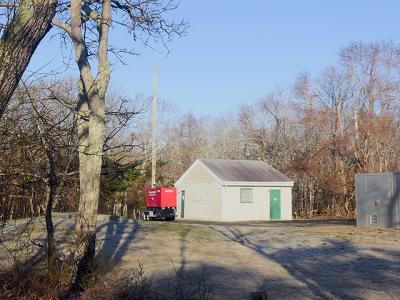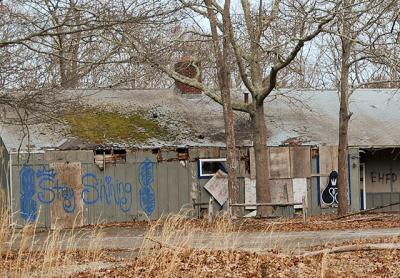Second Look at Schwenk Subdivision
Second Look at Schwenk Subdivision

After receiving strong opposition from the East Hampton Town Planning Board, a proposed subdivision of 41.3 acres of farmland along Montauk Highway in Sagaponack came under further scrutiny from the Sagaponack Village Board on Monday.
The land is owned by Kenneth Schwenk and his family, who are seeking to develop nine house lots that will be clustered next to nearly 27 acres of an agricultural reserve. Given the property’s proximity to East Hampton Town, state law mandated that Sagaponack give the town the opportunity to weigh in on the development, and the reaction was decidedly negative.
Job Potter, the chairman of the planning board, called the proposal an “ugly subdivision of farmland” and the board recommended that East Hampton urge Sagaponack Village to find ways — including using community preservation fund money — to protect the property.
Sagaponack Village Mayor Donald Louchheim broached the idea with Mr. Schwenk at the board meeting on Monday. “Basically the town is wondering if the applicant would consider an 80-percent preservation of open space or the development rights sold to the town of Southampton,” said Mr. Louchheim.
“No,” replied Mr. Schwenk, who said that the Schwenk family had sold plenty of development rights over the years.
One such sale, which occurred in 2001, covered 42.2 acres of land on Long Lane in East Hampton across from the high school. That parcel, which had been the focus of farmland preservation advocates for decades, was purchased from the Schwenk family by East Hampton Town and Suffolk County at a time when a complex of sports fields and athletic facilities were being considered for the site.
On Tuesday, Alice Cooley, the lawyer representing Mr. Schwenk, clarified that he is not completely dismissing the notion of selling the development rights to the Sagaponack land, but that he is focusing now on getting the site plan properly mapped out.
During his appearance before the board, Mr. Schwenk addressed the need to add agricultural accessory buildings to the site map for the subdivision, which is called Meadowmere. As it stands, the map allocates a 53,000-square-foot lot for each of the nine proposed houses in addition to the existing 55,000-square-foot lot that currently contains Mr. Schwenk’s house and other structures.
Mr. Schwenk resisted the board’s suggestion to incorporate the new agricultural buildings into his residential lot and said he would be seeking 60,000 square feet of space for the structures. “I think 60,000 would be adequate to accommodate and sustain a viable farm, not a toy farm,” he said. Mr. Schwenk and the majority of board members agreed that the only potential spot on the land to situate those structures would be adjacent to the east side of the existing house. William Barbour, a board member, reasoned that the presence of the house would keep the buildings out of view from those traveling east on Montauk Highway, and a deep slope in the land would keep the structures largely out of sight from those traveling west as well.
The board has asked Mr. Schwenk to add a 60,000-square-foot building envelope to the site map. The fire department has also requested the inclusion of a fire well located near the cluster of nine houses. Once the board has determined that the site map is fully representative of the proposal, it will set a date for a public hearing.
Mr. Louchheim pointed out that it is likely that officials from East Hampton town would appear at that hearing to reiterate their disapproval of the plan.
Acknowledging that it will take some doing to make his subdivision plans a reality, Mr. Schwenk said, “This is not going to happen in the next week. This may never get done in my lifetime. This is for the future.”







